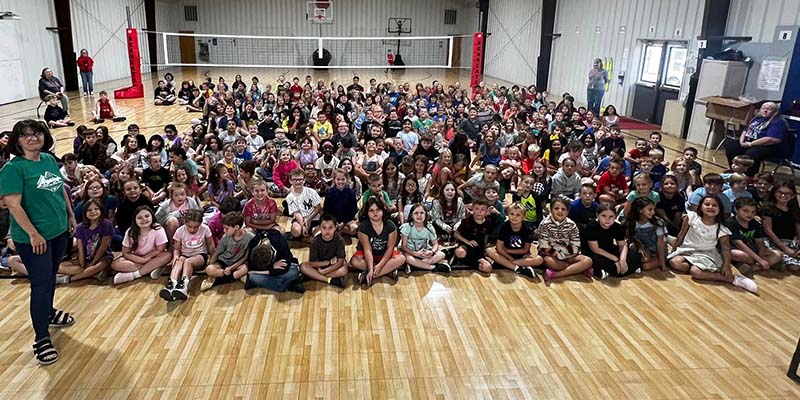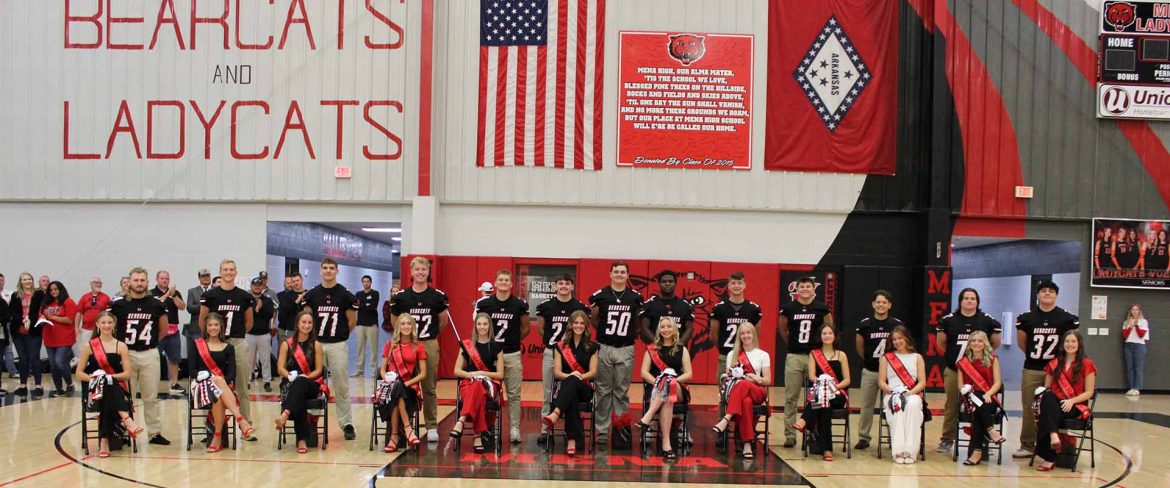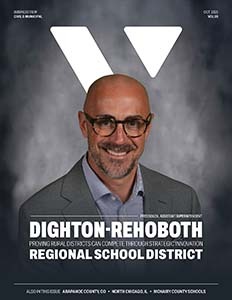Forging a Future in the Arkansas Mountains
A rural school district demonstrating that aligning education with economic reality is the ultimate strategy for community development.
In the picturesque yet isolated terrain of the Arkansas mountains, the community of Mena is experiencing a period of notable growth. Superintendent Lee Smith characterizes the locale as being on “the edge of everything in the middle of nothing,” a phrase that captures both its geographic remoteness and its unique, self-reliant character.
This evolving economic landscape, marked by a surge in tourism and a housing boom, places distinct demands on its public institutions. At the heart of the community’s response is Mena Public Schools, a district guided by a powerful, practical philosophy.
Smith frames its mission around a simple but profound idea: “ideas are more valuable than degrees and skills are more valuable than credits.” This principle signals a decisive shift from traditional, credit-based education to an outcome-based model focused on real-world capability.
Strategically aligning its programs with the economic needs of the region, Mena Public Schools is forging a self-sustaining ecosystem that prepares students for local careers, diligently supports its staff, and fosters confident, sustainable growth for the entire community.
The Foundation: “Prepared, Supported, Confident”
The strategic initiatives at Mena Public Schools are not isolated projects but are driven by a deeply embedded operational framework. This framework is crystallized in the district’s succinct and powerful mission, which Smith articulates as ensuring “our students are prepared, our staff is supported and our community is confident.”
“Part of that purpose is helping one another achieve those purposes or realize those purposes and focusing on each unique, special talent or skill that enhances the community,” Smith explains. “We also want to build collective confidence in the community. For everybody.”
This mission statement is far more than a slogan; it is the strategic blueprint from which all programs, supports, and investments are derived. This foundational commitment to holistic support naturally leads to the specific, tangible structures the district has put in place to turn this philosophy into reality.

The Support System: Bolstering Students and Staff
Operationalizing its mission requires a modern, multi-faceted support system that functions like a strategic human capital investment. For students, Smith states that, “we have personnel that serve in the support realm, everything from mental health to tutors.” Beyond physical resources, the district has built support “through our procedures and collaboration,” establishing formal channels to give voice to employees and parents within the system.
This holistic approach extends decisively to its faculty. Assistant Superintendent Bridget Buckley outlines a personalized professional development model that moves far beyond academics. “Each principal works with teachers to help them identify what areas they need additional support in,” she says, noting that while academic support is a constant, the needs can vary widely. “It may be that they’re frustrated with technology. So we make sure we get them technology support. It may be wellness that they truly need…we have an organization in the state called Aware that provides wellness for teachers.”
A cornerstone of this strategy is a licensed mental health therapist, hired through a grant, who provides a powerful ROI in staff retention and efficacy. This professional supports students but is also “available to teachers, staff and extended staff… anytime that they need it,” Buckley explains.
The Community and The Challenge: Isolation and Growth
The strategy of Mena Public Schools is profoundly shaped by the unique economic character and evolving landscape of its community. Smith describes the area as “somewhat isolated,” being at least ninety minutes from any comparable municipality.
“That isolation brings about some unique characteristics,” notes Smith, “it’s an agricultural community, poultry houses, cattle, and forestry.” Alongside a strong manufacturing presence, Smith believes “we kind of have the best of both worlds in as far as opportunities for students.”
Now, the economic base is experiencing rapid growth from an unexpected sector: tourism. The scenic mountains have drawn developers building bike trails with lifts, a project Smith calls “a big boom for our local economy.” He notes the tangible effects, “we’re seeing a lot of property values increase because people are moving in. We don’t have enough housing.”
While this generates excitement, Smith is candid that it “also creates some friction and there are pain points because we don’t have the infrastructure to handle all the needs that we are anticipating coming.” Faced with this challenge, the district is proactively shaping the skilled workforce needed to sustain this new economic reality.
The Strategy: Curriculum Aligned with Economic Reality
Mena Public Schools is executing a direct strategy to align its curriculum with the community’s evolving labor needs. “Lots of lots of health care, hospitality and tourism jobs,” Smith explains.
A key partnership with the University of Arkansas Rich Mountain feeds students into a diesel mechanics program and aims to revive a comprehensive culinary program spanning “from the food preparation through management,” Smith says.
Alongside robust traditional CTE pathways, an innovative 80-acre outdoor classroom, developed with federal agencies, provides hands-on learning in conservation. “They donated the time and expertise. We provided the land,” adds Smith.
The district also emphasizes technology, hosting a popular “no-code hackathon” with around 80 participants. “We are really getting deeper into internship and apprenticeship,” Smith explains, “and our high school principal works really hard to find placement for our high school students to try to get real world experience before they leave high school.”
A prime partnership with NIDEC places students in business roles, gaining real office experience despite age restrictions on the factory floor. This ensures graduates are prepared for both established and emerging local careers. In addition, Clark Construction, which is constructing a new medical professions building at the college, is hiring high school students to apprentice the construction workers to learn a trade and earn credit for graduation.

Capital Investments: Building for Belonging and Capability
Mena Public Schools treats its budget as a strategic tool for investing in belonging and capability. “We’re investing in the mission to have a place for every student so they have belonging,” says Smith, which extends beyond academics to activities they enjoy, exemplified by a new activity center used for sports, band, and eSports.
The district’s most crucial investment is in its people. “We’ve increased salaries for teachers three times since I’ve been here,” Smith says, including a recent 3% raise and establishing “incentives for those high performing teachers and coaches.” Parallel to this is equipping students to “learn by doing,” through modern tools like new CNC machines acquired via grants for CTE programs.
“We were also given Internet streaming equipment from our athletic booster club that was used to stream games online and turned that donation into another career pathway for our students, enhancing the broadcasting experience for viewers and building transferable skills,” he adds.
A standout initiative is the REACH program, which turned paraprofessional roles from a “dead end job” into a teaching pathway. “We’re able to get the credentials and the skills that they need to go into the classroom,” says Smith. “So now they’re high earners and can contribute more to the community that way, both professionally and economically.”
The Long-Game: Ensuring a Return on Investment
Mena Public Schools’ strategy is focused on a long-term return, reversing “brain drain” by giving graduates reasons to stay or return. Buckley states plainly, “we’re also investing in ways to make sure that our students have something to come back here to or to stay here for.”
This commitment is operational. She shares a recent example: “Our local water department reached out to me the other day and said, ‘I need some employees. Here’s what I’m looking for. Can you help me with this?’” This direct employer-district collaboration is now yielding results. Buckley notes they are “starting to see students come back to town,” including teachers returning with families and professionals like a lawyer choosing Mena over a larger city, signaling a tangible reversal of outmigration.
“We’re trying hard to build those connections that bring them back or keep them here to make sure that we are investing in the community long term too,” she adds.

Looking Ahead: Clearing the Path
For Smith, the future is about perfecting, not pioneering. The focus is on executing existing programs with precision to ensure they fully serve students and the local economy. Smith’s vision is clear and sustainable, “it’s having those programs and really clearing the path for these jobs that will be here and our students finding a place in the community. That’s really what we want to do moving forward.” This final step ensures every student has a direct route to a meaningful future in Mena.
The Mena Blueprint: Education as an Economic Catalyst
Mena Public Schools demonstrates how a rural district can drive regional economic development. By operating on the principle that “ideas and skills are more valuable than credits or degrees,” it has built a self-sustaining ecosystem. Through deep industry integration, strategic investments in people and technology, and a focus on local career pathways, the district offers a replicable model of proactive leadership. Mena’s story goes beyond education, it provides a blueprint for how institutional vision can cultivate a prepared workforce and a stable, economically vibrant community.
AT A GLANCE
Who: Mena Public Schools
What: A strategic, forward-thinking school district modeling how education can be aligned with local economic needs to create a self-sustaining community ecosystem.
Where: Mena, Arkansas
Website: https://www.menaschools.org/
PREFERRED VENDORS
Progressive Technologies, Inc.
Progressive Technologies, Inc. : www.ThinkProgressive.com
Progressive Technologies, Inc is a sole source partner for Security and Life Safety in hundreds of school districts across multiple states. We design, install, maintain, test and monitor, Security
Camera’s, Access Control, Vapor Detection, Fire Alarm, Intrusion and Intercom. PTI is an industry leader for data/structured cabling, fiber, and IP phone systems.


